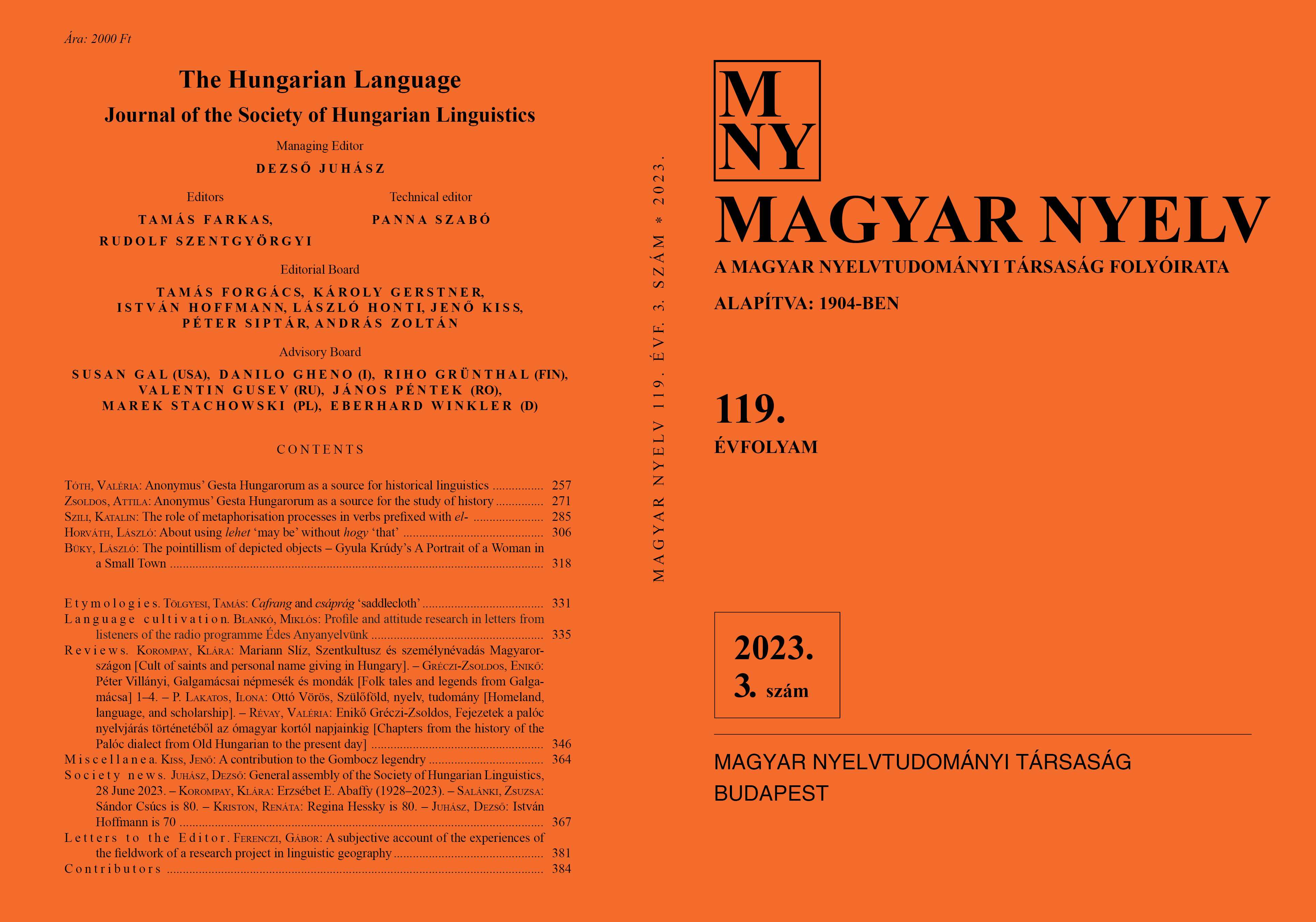About using lehet ‘may be’ without hogy ‘that’
DOI:
https://doi.org/10.18349/MagyarNyelv.2023.3.306Keywords:
clause boundary, clause deletion, conversion, interpunctuation, regions, generationsAbstract
The present study investigates the phenomenon of deleting the conjunction hogy ‘that’ in the subject complement clause of the main clause verb lehet ‘it may be (that)’, which can happen in two ways: on the one hand, it can be a stylistic variant of the biclausal structure, that is, of the case where a matrix clause – subordinate clause structure is retained; on the other hand, the clause boundary can cease to exist, the original matrix verb lehet may turn into a modal verb modifying its original subordinate clause. Commenting on the observations of the literature written in the 2010s, the author illustrates the features of these two types on the basis of data collected from written and spoken texts, and discusses both the importance and the difficulties of distinguishing these two types. He also examines the origin of the single-clause variant, the direction of its spread, and the generational differences in its use.
Downloads
Published
Issue
Section
License
Copyright (c) 2023 László Horváth

This work is licensed under a Creative Commons Attribution-NonCommercial-NoDerivatives 4.0 International License.
Magyar Nyelv is a Diamond Open Access periodical. Documents can be freely downloaded and duplicated in an electronic format, and can be used unchanged and with due reference to the original source. Such use must not serve commercial purposes. In the case of any form of dissemination and use, Hungarian Copyright Act LXXVI/1999 and related laws are to be observed. The electronic version of the journal is subject to the regulations of CC BY-NC-ND (Creative Commons – Attribution-NonCommercial-NoDerivatives).
The journal permits its authors, at no cost and without any temporal limitation, to make pre-print copies of their manuscripts publicly available via email or in their own homepage or that of their institution, or in either closed or free-for-all repositories of their institutions/universities, or other non-profit websites, in the form accepted by the journal editor for publication and even containing amendments on the basis of reviewers’ comments. When the authors publicize their papers in this manner, they have to warn their readers that the manuscript at hand is not the final published version of the work. Once the paper has been published in a printed or online form, the authors are allowed (and advised) to use that (post-print) version for the above purposes. In that case, they have to indicate the exact location and other data of the journal publication. The authors retain the copyright of their papers; however, in the case of an occasional secondary publication, the bibliographical data of the first publication have to be included.



